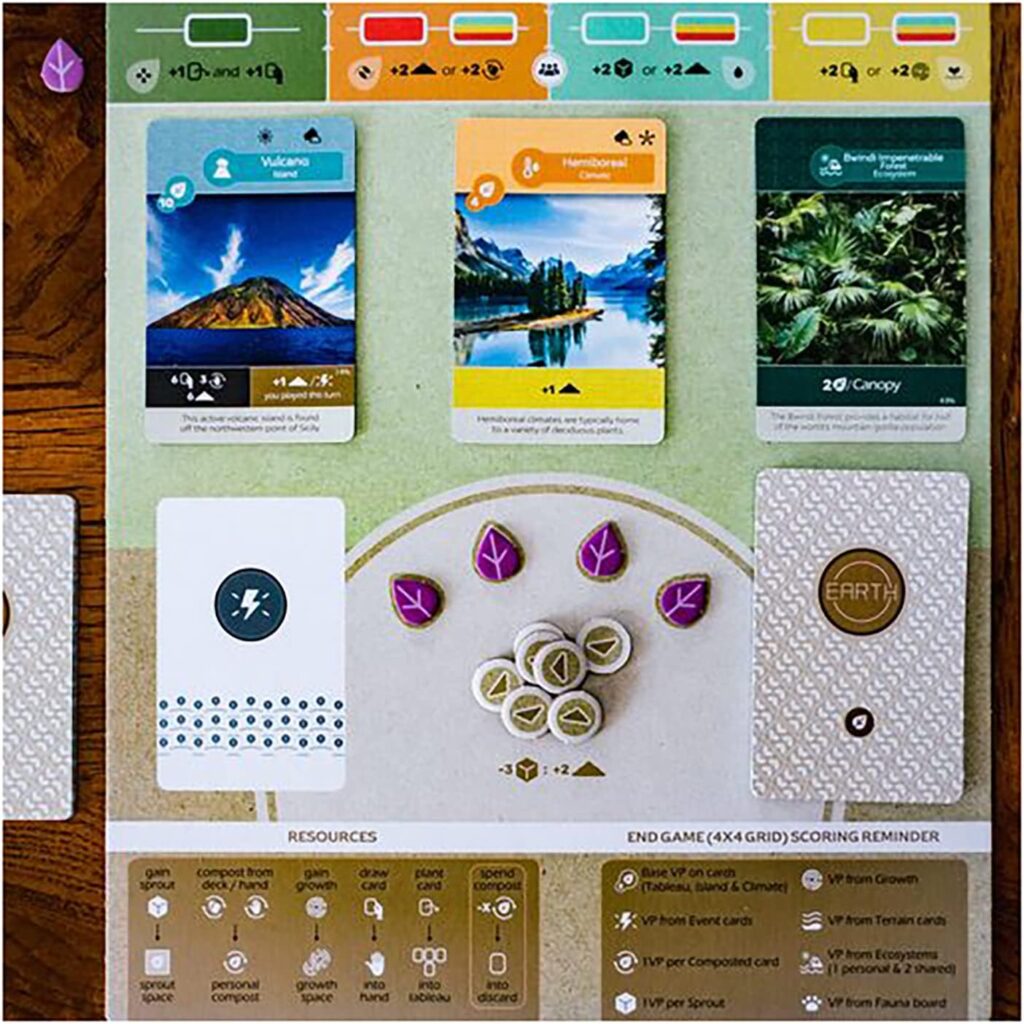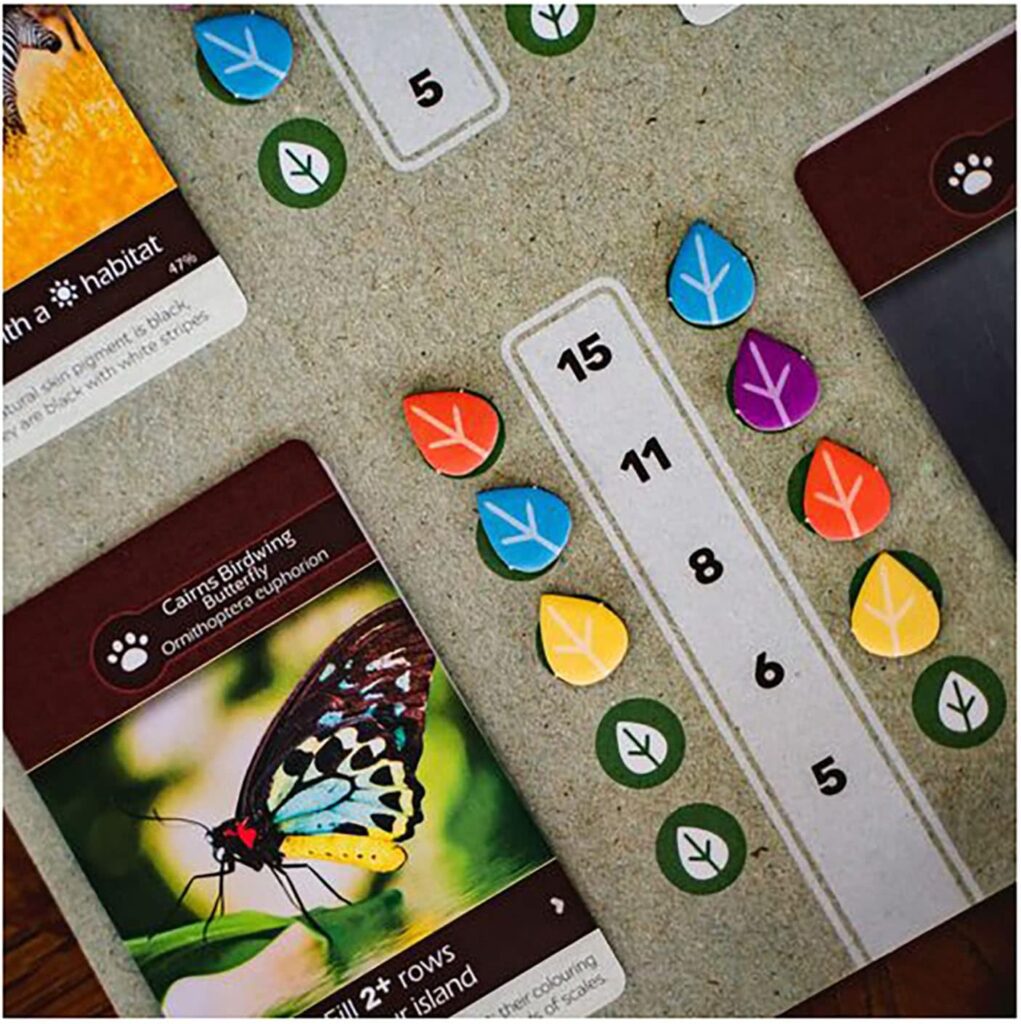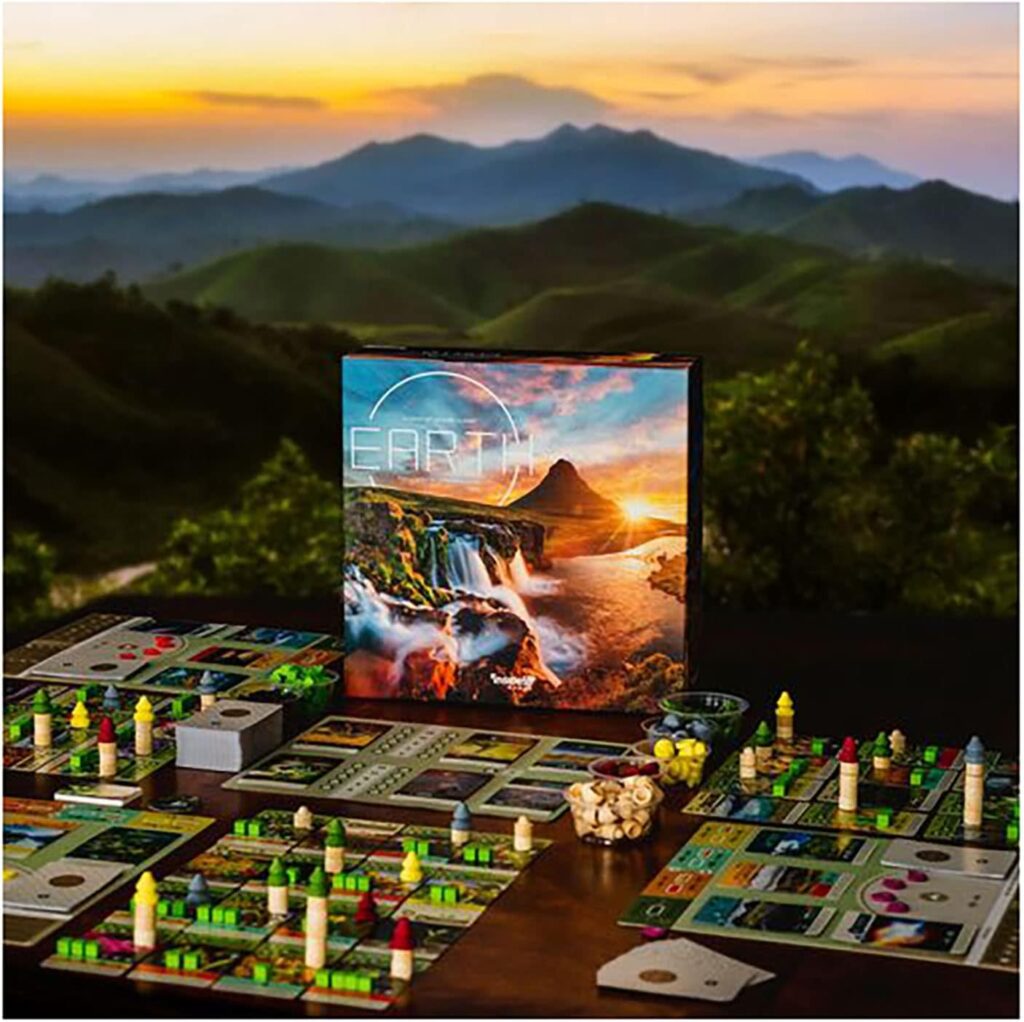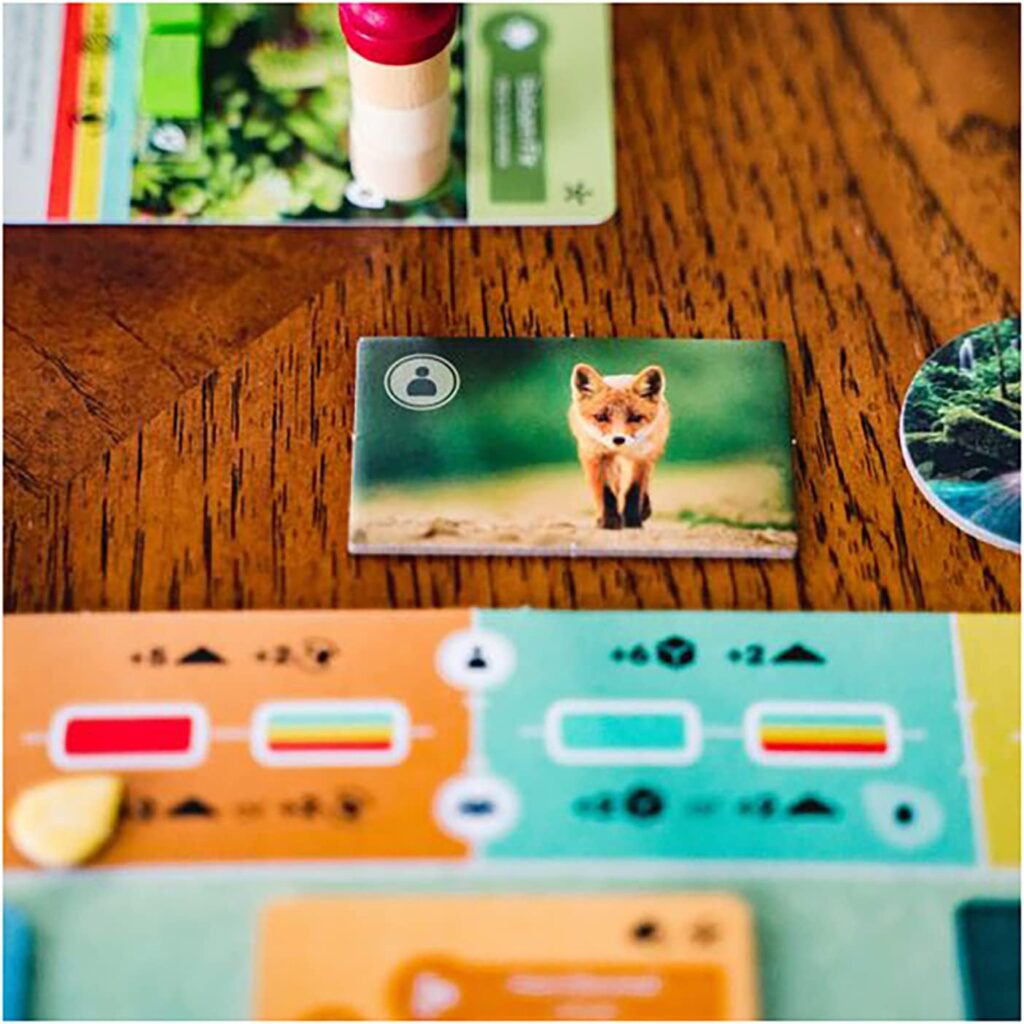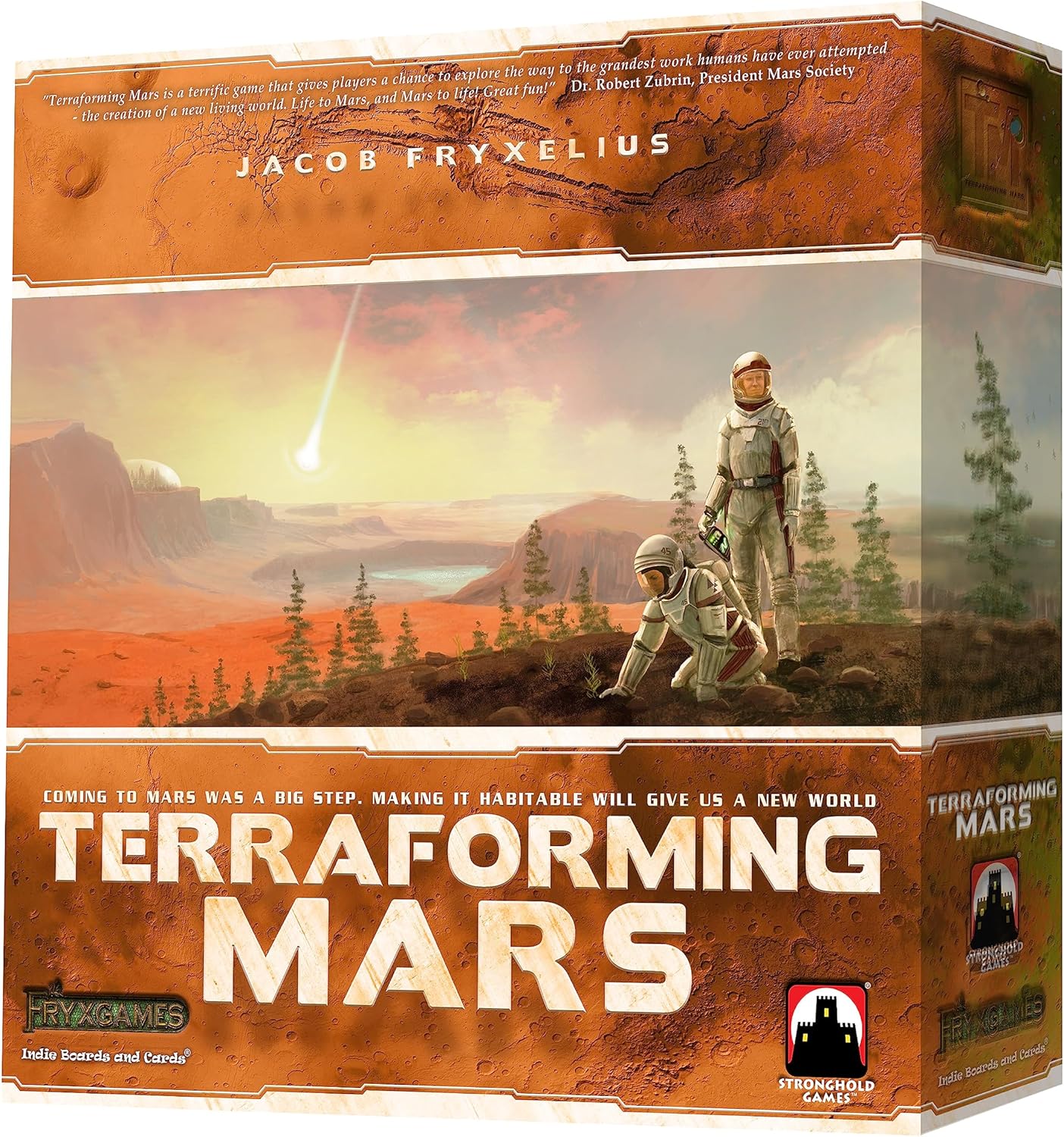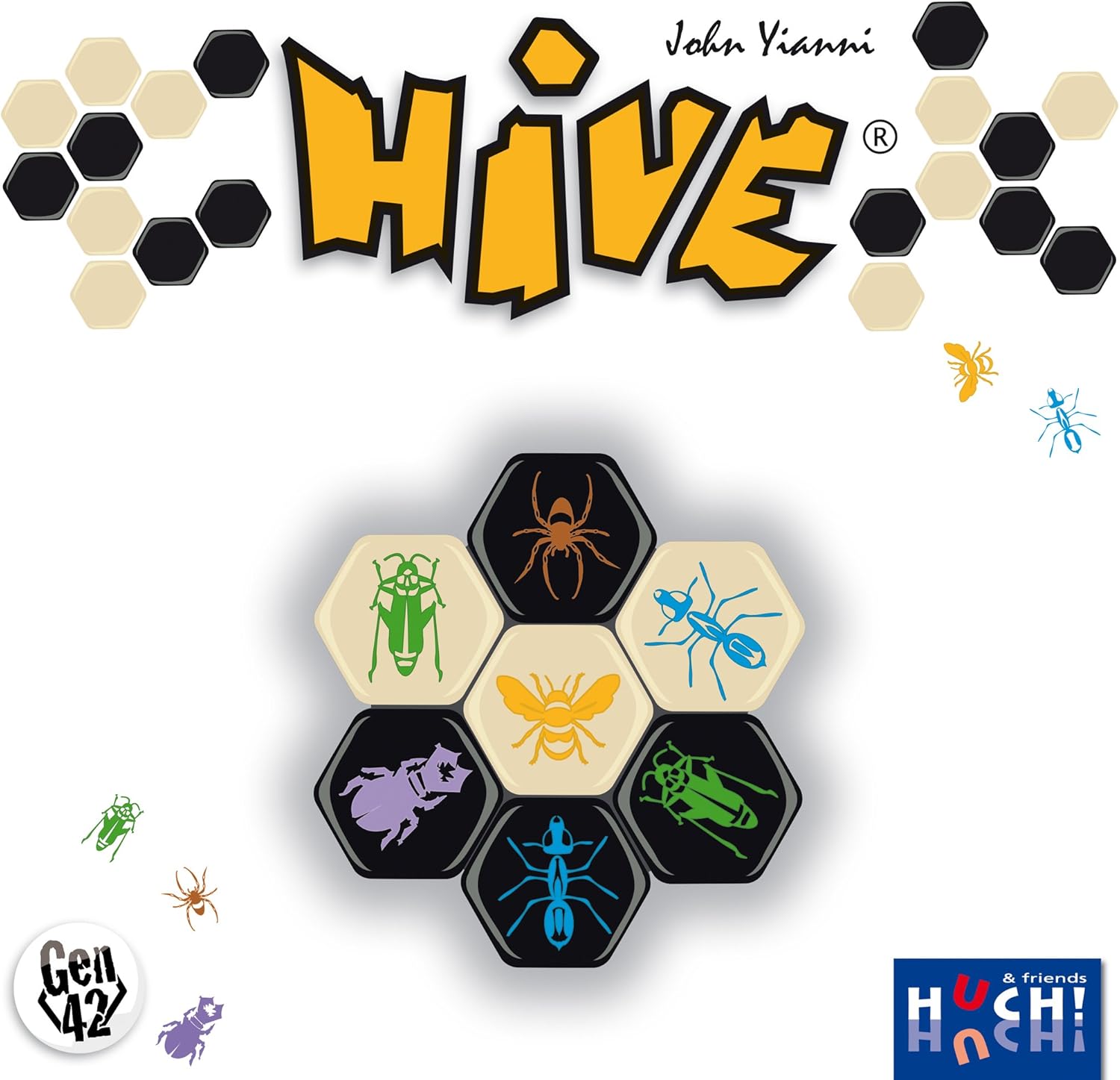Earth is a deeply satisfying engine-builder that brings ecological systems to life through elegant mechanics and layered decision-making. Players build out a 4×4 tableau of terrain, plants, animals, and events in an effort to create a thriving, biodiverse island. The result is a strategic puzzle that grows in complexity as your tableau fills, eventually erupting into powerful combos and meaningful scoring turns.
From the moment you begin choosing a starting Island, Climate, and Ecosystem, Earth introduces asymmetry and adaptability. Each game presents different objectives and strategic incentives, encouraging players to shift their approach based on available cards and player goals. With minimal downtime and a turn structure that keeps everyone engaged, Earth maintains a smooth, rewarding rhythm throughout.
Visual Design & Theme
Earth features some of the most naturalistic artwork in the engine-building genre. Cards showcase lush plants, animals, weather systems, and landscapes from around the globe, creating a visual language that’s both educational and immersive. The color palette is earthy and organic, and even the resource tokens contribute to the cohesive tone.
Importantly, the theme isn’t just aesthetic—it’s built into the way cards interact. Plants need soil and water to grow, animals require specific environments, and events mimic natural phenomena that shift the balance of play. The result is a game that feels deeply connected to its subject matter without resorting to heavy narrative.
Production Value
Component quality in Earth is high across the board. The wooden sprout tokens, tree trunks, and fauna pieces all feel substantial in-hand, while the oversized player boards are durable and clearly laid out. Each of the 364 cards is double-sided and well printed, and the linen finish ensures longevity even through heavy shuffling.
Where the production falls slightly short is in the insert. The game includes many types of tokens and cards, but the box offers limited organization out of the box. Players will benefit from investing in baggies or third-party inserts to improve setup efficiency. Still, the visual and tactile experience is well above average for its price point.
Ease of Learning
Earth strikes a balance between approachability and depth. Its core mechanic—select one of four actions per turn and trigger matching icons in your tableau—is easy to grasp, especially with the help of the well-structured player aid and iconography. New players are typically up and running within the first round.
However, the interactions between card effects, the timing of abilities, and the endgame scoring opportunities present a learning curve. It may take a full playthrough for players to truly understand how to generate strong synergies and maximize point potential. Despite this, Earth is highly teachable and doesn’t overwhelm once the basics are internalized.
Setup & Teardown Time
Earth includes a fair number of components, but the setup is relatively manageable once you’re familiar with the game. Setting up the shared resource pools, organizing player boards, and dealing starting cards takes about 8–10 minutes with minimal fuss. If your cards and tokens are pre-sorted in containers, the process is even faster.
Teardown takes a similar amount of time and benefits from having a designated system to re-bag and separate components. While it’s not a game you’ll set up for a 15-minute filler session, Earth is efficient enough to hit the table regularly without feeling like a chore.
Gameplay Pace
Earth’s simultaneous action structure keeps everyone involved every turn. When one player selects an action—Plant, Compost, Water, or Grow—all players get to perform a lesser version of that action, ensuring that no one ever sits idle for long. This is one of Earth’s standout pacing features, allowing the game to move briskly even at higher player counts.
As players build larger tableaus, later turns can become more complex. You’ll find yourself checking multiple triggered abilities, sequencing actions carefully, and sometimes taking a little longer to resolve turns. But these moments feel earned—the result of thoughtful planning and strategic depth. The game never drags; it evolves.
Replayability
Replay value in Earth is exceptional. The vast card pool means no two games will ever feel the same. Players will explore dozens of different strategic paths—building horizontally to complete rows and columns, developing flora-heavy tableaus, maximizing sprouts and trunks, or leaning into animals and events for scoring bonuses.
The randomized Island, Climate, and Ecosystem cards further shake up starting conditions, and the Fauna board creates shifting mid-game incentives that push players to adapt. Earth supports this variability while maintaining strategic coherence, which is a rare and welcome feat.
Conclusion
Earth is a grounded, smartly designed engine-builder that invites players to engage with its systems at a thoughtful, satisfying pace. It’s thematically rich, beautifully produced, and loaded with variety—without becoming bloated or overcomplicated. Every turn feels like it matters, whether you’re laying seeds or activating a five-card chain reaction. It’s a game that quietly rewards efficiency, creativity, and foresight, while immersing players in a beautifully realized natural world.
For fans of tableau-builders like Wingspan or Ark Nova who want something slightly lighter in rules but no less satisfying in play, Earth stands tall as a must-try title.


